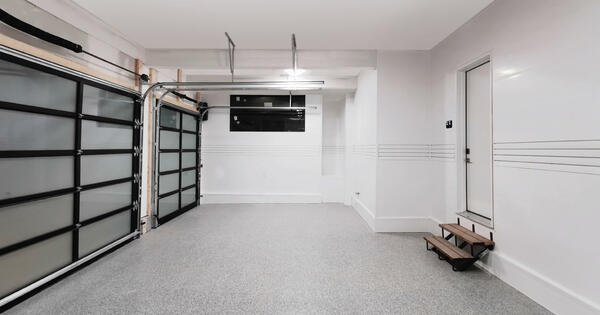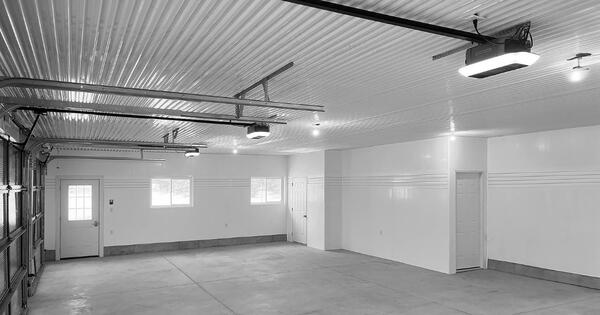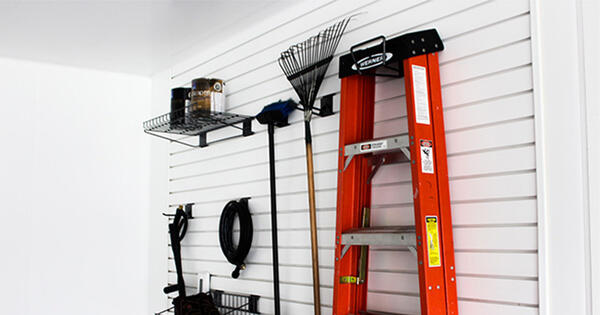Designing a garage isn't just about creating a place to park your car — it's about making the most out of the space for storage, safety, and even aesthetics. Whether you're building a new garage or renovating an existing one, here are seven special considerations to keep in mind.
1. Space Planning and Layout
When building a new garage or re-designing an existing structure, one of the most critical steps is measuring your space accurately. This ensures that everything fits perfectly and functions well — there's nothing more frustrating than realizing too late that your car or storage solutions don’t fit as intended. Getting the dimensions of your garage right is essential:
- Vehicle Dimensions: Start by measuring your vehicles. This includes not just the length and width, but also the height. Don’t forget to consider any accessories like roof racks or bike racks that add to these dimensions.
- Maneuvering Space: You'll need extra room around your vehicles to comfortably get in and out, open doors, and walk around without bumping into anything. A cramped garage can lead to accidental damage and a lot of frustration.
- Storage and Work Areas: If you plan to use your garage for storage or as a workspace, you need to account for this in your measurements. This includes shelving units, tool benches, and any other equipment or storage solutions you want to include.
- Future-Proofing: Consider any future needs or potential changes in vehicle size. Planning ahead can save you from costly modifications down the road.
Measuring your space accurately helps ensure everything fits and functions as intended — saving you time, money, and hassle.

2. Storage Solutions
Finding the right storage solutions for your garage can make a world of difference in keeping everything organized and easily accessible. From shelves to slatwall systems, there are plenty of options to suit your needs:
- Shelves: Wall-mounted shelves are excellent for storing bins, boxes, and frequently used items. They’re easy to install and keep items off the floor, but they can get cluttered if not well-organized.
- Cabinets: These provide enclosed storage, protecting items from dust and creating a cleaner look. They’re great for tools and hazardous materials but can be more expensive and require more space.
- Overhead Racks: These use ceiling space to store seasonal items or rarely used gear. They free up floor space and are ideal for large, lightweight items, but accessing them can be difficult without a ladder.
- Slatwall Systems: Slatwall systems like Trusscore SlatWall are a high-strength vertical storage option that lets you hang hooks, baskets, and shelves on the wall, making it easy to rearrange storage as needed. The panels hold up to 75 pounds per square foot and are an excellent way to store heavy items like power tools and sports equipment while keeping everything easily accessible.
- Pegboards: Simple and cost-effective, pegboards are perfect for hanging tools and keeping them within reach. They’re easy to install but may not support heavier items.


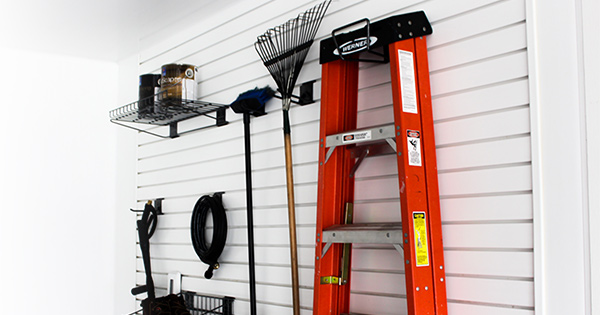
RELATED BLOG POST
Trusscore SlatWall is a Better Alternative to Pegboard for On-the-Wall Storage
While pegboards are relatively easy to use and are environmentally friendly, they do have downsides: They’re difficult to install, difficult to clean, and aren’t very durable. PVC-based slatwall, like Trusscore SlatWall, is the durable and water-resistant pegboard alternative you’ve been looking for.
3. Lighting and Electrical Outlets
Proper lighting and well-placed electrical outlets are essential for making your garage a functional and safe space. Let's explore how you can optimize these elements for your garage.

Best Suited Lights for Garages
Choosing the right type of lighting for your garage can make all the difference. Here are some options to consider:
- Overhead lights are, typically, fluorescent or LED fixtures mounted on the ceiling. They provide general illumination for the entire garage.
- Task lighting is focused on specific areas where you perform tasks, such as workbenches or tool areas, and offers bright, concentrated light exactly where you need it.
- Motion-sensor lights are lights that turn on automatically when motion is detected. They’re convenient and energy-saving, as they only turn on when someone is in the area, and they can enhance security by lighting up when someone enters the garage. They’re best for entry points and general illumination to enhance convenience and security.

Strategic Placement of Electrical Outlets
Having electrical outlets strategically placed around your garage is just as important as good lighting. Here’s where to place them:
- Work Areas: Ensure there are outlets near workbenches and tool stations so you can easily power tools and equipment.
- Corners and Walls: Install outlets along the walls and in corners to accommodate different layouts and ensure you have power access wherever you need it.
- Ceiling: Consider adding an outlet in the ceiling for overhead lights or to power a garage door opener.
- Outdoor Access: If your garage serves as an entry point to your home, have an outlet near the door for convenience, such as charging outdoor equipment.
4. Flooring Options
Choosing the right flooring for your garage can significantly impact its functionality, appearance, and durability. There are several popular options to consider, each with its own advantages and disadvantages:
- Epoxy coatings create a durable, glossy surface that is resistant to stains, chemicals, and abrasions. They can enhance the overall appearance of your garage with various color and pattern options. However, the installation process can be time-consuming and requires proper surface preparation. Epoxy can also be slippery when wet, and it may crack if the underlying concrete shifts. It’s best for homeowners looking for a long-lasting, attractive finish that's easy to clean.
- Interlocking tiles are easy to install without the need for adhesives, making them a great DIY option. They come in a variety of materials (plastic, rubber, vinyl) and colors, offering a customizable look. They can also be easily replaced if damaged. However, interlocking tiles can be more expensive than other options, and if not properly installed, they might shift or create uneven surfaces. They’re best suited for homeowners looking for a customizable, easy-to-install solution that can be changed as needed.
- Rubber mats are easy to install and provide a cushioned, non-slip surface that's comfortable to walk on. They’re great for absorbing shock and reducing noise, making them ideal for workshops or home gyms. However, these mats may not be as durable as epoxy or tiles for heavy-duty use, and they can be prone to staining and degradation over time. Ultimately, they’re best suited for areas where comfort and noise reduction are priorities, such as home gyms or workshops.



5. Climate Control and Mold Prevention
Maintaining a comfortable temperature, proper ventilation, and controlling moisture levels in your garage are essential for creating a safe, functional, and durable space. These factors help protect your belongings, ensure comfort, and prevent issues like mold and mildew.
- Insulation: Insulating walls, ceilings, and the garage door helps maintain a stable temperature, improving energy efficiency and comfort.
- Heating and Cooling Systems: Portable heaters and fans are easy to use but may not be efficient for large spaces. Ductless mini-split systems provide precise temperature control but have higher upfront costs. Radiant floor heating offers even, comfortable heat and is ideal for workshops, though it's best suited for new constructions.
- Ventilation Systems: Exhaust fans effectively remove fumes and moisture, ensuring good air quality. Wall vents allow for natural air circulation, though they are less effective than mechanical options. Ventilated garage doors incorporate vents into the design, providing airflow without compromising security.
- Dehumidifiers: Dehumidifiers help control humidity levels, preventing mold and mildew. They’re easy to use but require regular emptying or a drainage solution.
- Sealing and Weatherstripping: Sealing gaps around doors and windows, and adding weatherstripping, helps prevent drafts and moisture intrusion, maintaining a stable indoor climate and improving energy efficiency.
- Moisture Barriers and Mold Prevention: Install moisture barriers on walls and floors to prevent water seepage. Use mold-resistant paint and materials to reduce the risk of mold growth. Ensure proper drainage around the garage to keep water away from the foundation.
- PVC Wall and Ceiling Panels: Drywall creates a breeding ground for mold to grow in humid garages, and the best way to avoid it is to install an alternative like Trusscore Wall&CeilingBoard instead. The pre-finished panels have a non-porous surface that is 100% moisture and water resistant. The panels will never grow mold or mildew regardless of the humidity in your garage and can be repeatedly wiped down with soap and water or regular household cleaners to keep your space fresh.

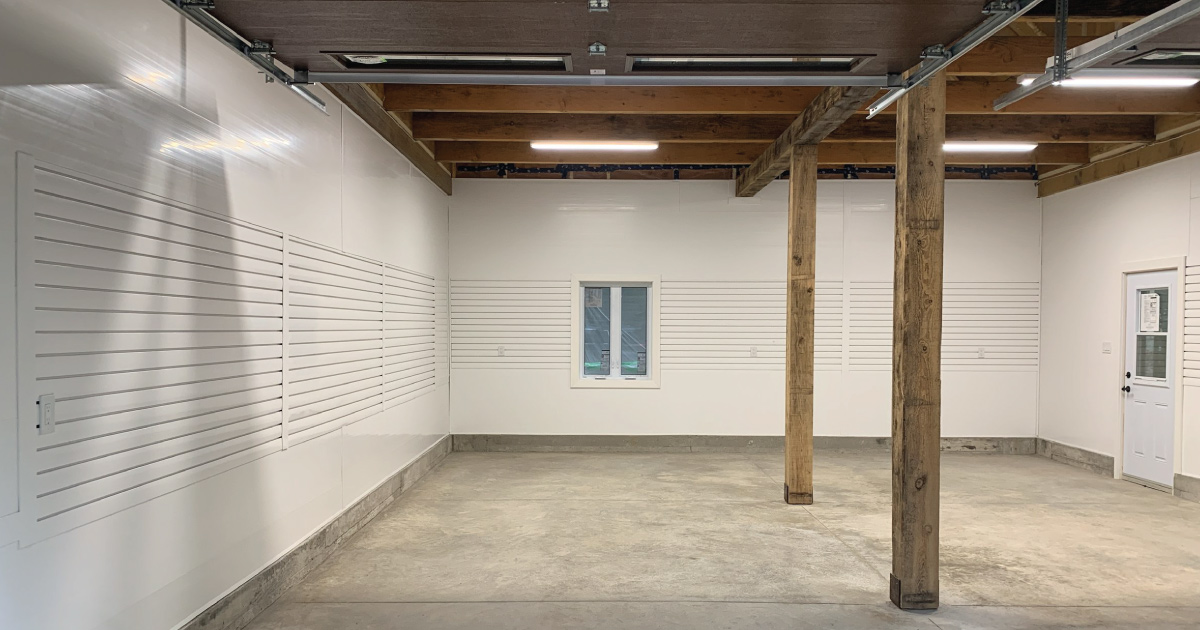
RELATED BLOG POST
Trusscore Wall&CeilingBoard is a 100% Mold Resistant Alternative to Drywall for Your Garage
Unlike traditional drywall, Trusscore Wall&CeilingBoard panels are non-porous and 100% waterproof. They’ll never absorb water, making them resistant to mold, mildew, and rot. This makes them particularly suitable for garages where moisture levels may be higher due to occasional spills or humidity.
6. Safety and Security
Keeping your garage safe and secure is paramount for protecting your property, belongings, and loved ones. Here’s what to include in your garage to keep your space as safe as you can:
- Fire Extinguishers: Install fire extinguishers rated for Class A, B, and C fires in accessible locations. Regularly inspect and maintain them according to manufacturer guidelines.
- Smoke Detectors: Place smoke detectors in your garage to alert you to potential fires. Test them regularly and replace batteries as needed.
- Carbon Monoxide Detectors: Carbon monoxide is odorless and colorless, making it especially dangerous. Install detectors to alert you to elevated levels of carbon monoxide in the air.
- Sturdy Locks: Use high-quality locks on garage doors and windows to prevent unauthorized access. Consider reinforcing doors and frames with additional security measures.
- Security Cameras: Consider installing security cameras to monitor activity in and around your garage. Visible cameras can deter potential intruders, while recording capabilities provide evidence in case of theft or vandalism.
- Alarm Systems: Consider installing a security alarm system that detects motion, entry, or fire. Choose a system with remote monitoring capabilities for added peace of mind.
7. Aesthetic Considerations
Your garage doesn’t have to be just a functional space — it can also complement the rest of your home in style. With thoughtful choices in paint colors, finishes, and decorative elements, you can transform your garage into an attractive extension of your living space.
- Coordinate Paint Colors with Your Home’s Interior and Exterior: Choose paint colors that match or complement the exterior of your home. This creates a seamless transition from your home to the garage, enhancing curb appeal. Neutral colors like gray, beige, or white are versatile and create a clean, polished look. They also make it easier to change décor and accent colors in the future.
- Choose High Quality Finishes: High-quality finishes such as epoxy coatings or polished concrete can make your garage floor look sleek and stylish. These finishes are not only durable but also easy to clean.
- Match Cabinets and Shelving to the Rest of Your Home: Opt for cabinetry and shelving that match the style of your home. If you have modern interiors, choose sleek, minimalist designs. For a more traditional look, go for wood finishes that match your home’s woodwork. Select hardware and fixtures in finishes that complement the rest of your home, such as brushed nickel, matte black, or polished chrome.

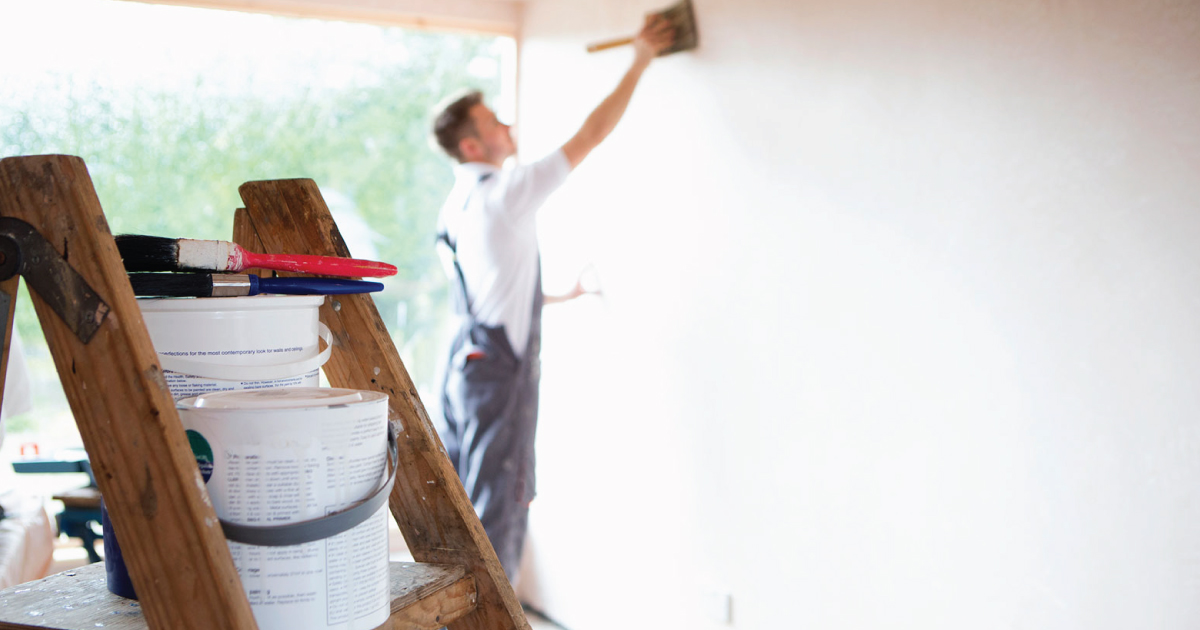
RELATED BLOG POST
How to Select the Best Garage Wall Paint for Your Space
Selecting the right paint for your garage walls isn't just about aesthetics; it's about functionality, too. Your garage is more than just a space to park your car — it's a workshop, a storage area, and perhaps even a place for hobbies. Choosing the best paint can enhance the overall look of your garage while also providing protection against the unique challenges posed by this environment.
By keeping these seven considerations in mind, you can design a garage that's not only functional but also a pleasant and safe space to spend time in.

